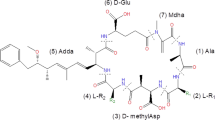Abstract
Melamine (2,4,6-triamino-1,3,5-triazine, C3H6N6), belonging to the s-triazine family, is an anthropogenic and versatile raw material for a large number of consumer products and its extensive use has resulted in the contamination of melamine in the environment. A novel melamine-degrading bacterium strain CY1 was isolated from a melamine-manufacturing factory in China. The strain is phylogenetically different from the known melamine-degrading bacteria. Approximately, 94 % melamine (initial melamine concentration 4.0 mM, initial cell OD 0.05) was degraded in 10 days without the addition of additional carbon source. High-performance liquid chromatography showed the production of degradation intermediates including ammeline, ammelide, cyanuric acid, biuret, and urea. Kinetic simulation analysis indicated that transformation of urea into ammonia was the rate-limiting step for the degradation process. The melamine–cyanurate complex was formed due to self-assembly of melamine and cyanuric acid during the degradation. The tracking experiment using CY1 cells and 13C3-melamine showed that the CY1 could mineralize s-triazine ring carbon to CO2. The strain CY1 could also catalyze partial transformation of cyromazine, a cyclopropyl derivative of melamine, to 6-(cyclopropylamino)-[1,3,5]triazine-2,4-diol.






Similar content being viewed by others
References
Baynes RE, Smith G, Mason SE, Barrett E, Barlow BM, Riviere JE (2008) Pharmacokinetics of melamine in pigs following intravenous administration. Food Chem Toxicol 46:1196–1200
Chen KC, Liao CW, Cheng FP, Chou CC, Chang SC, Wu JH, Zen JM, Chen YT, Liao JW (2009) Evaluation of subchronic toxicity of pet food contaminated with melamine and cyanuric acid in rats. Toxicol Pathol 37:959–968
Cook AM, Hutter R (1981) s-Triazines as nitrogen sources for bacteria. J Agric Food Chem 29:1135–1143
Cook AM, Hutter R (1984) Deet hylsimazine bacterial dechlorination, deamination, and complete degradation. J Agric Food Chem 32:581–585
Dodge AG, Wackett LP, Sadowsky MJ (2012) Plasmid localization and organization of melamine degradation genes in Rhodococcus sp. strain Mel. Appl Environ Microbiol 78:1397–1403
Hao X, Stone R (2008) Chinese probe unmasks high-tech adulteration with melamine. Science 322:1310–1311
He L, Liu Y, Lin M, Awika J, Ledoux DR, Li H, Mustapha A (2008) A new approach to measure melamine, cyanuric acid, and melamine cyanurate using surface enhanced Raman spectroscopy coupled with gold nanosubstrates. Sens Instrum Food Qual 2:66–71
Kandelbauer A, Widsten P (2009) Antibacterial melamine resin surfaces for wood-based furniture and flooring. Prog Org Coat 65:305–313
Lim L, Scherer SJ, Shuler KD, Toth JP (1990) Disposition of cyromazine in plants under environmental conditions. J Agric Food Chem 38:860–864
Lund KH, Petersen JH (2006) Migration of formaldehyde and melamine monomers from kitchen- and tableware made of melamine plastic. Food Addit Contam 23:948–955
Lv P, Wang Z, Hu K, Fan W (2005) Flammability and thermal degradation of flame retarded polypropylene composites containing melamine phosphate and pentaerythritol derivatives. Polym Degrad Stab 90:523–534
Qin Y, Lv X, Li J, Qi G, Diao Q, Liu G, Xue M, Wang J, Tong J, Zhang L, Zhang K (2010) Assessment of melamine contamination in crop, soil and water in China and risks of melamine accumulation in animal tissues and products. Environ Int 36:446–452
Sancho JV, Ibáñez M, Grimalt S, Pozo ÓJ, Hernández F (2005) Residue determination of cyromazine and its metabolite melamine in chard samples by ion-pair liquid chromatography coupled to electrospray tandem mass spectrometry. Anal Chim Acta 530:237–243
Shelton DR, Karns JS, Mccarty GW, Durhum DR (1997) Metabolism of melamine by Klebsiella terragena. Appl Environ Microbiol 63:2832–2835
Takagi K, Fujii K, Yamazaki K, Harada N, Iwasaki A (2012) Biodegradation of melamine and its hydroxy derivatives by a bacterial consortium containing a novel Nocardioides species. Appl Microbiol Biotechnol 94:1647–1656
Whitney PA, Coopers TG (1972) Urea carboxylase and allophana hydrolase: two components of a multienzyme complex in Saccharomyces cerevisiae. J Biol Chem 247:1349–1353
Xu S, Zhang Y, Sims A, Bernards M, Hu Z (2013) Fate and toxicity of melamine in activated sludge treatment systems after a long-term sludge adaptation. Water Res 47:2307–2314
Yang JJ, Tian YT, Yang Z, Zhang T (2010) Effect of melamine on potassium currents in rat hippocampal CA1 neurons. Toxicol In Vitro 24:397–403
Yokley RA, Mayer LC, Rezaaiyan R, Manuli ME, Cheung MW (2000) Analytical method for the determination of cyromazine and melamine residues in soil using LC-UV and GC-MSD. J Agric Food Chem 48:3352–3358
Yu CP, Roh H, Chu KH (2007) 17β-Estradiol-degrading bacteria isolated from activated sludge. Environ Sci Technol 41:486–492
Zheng X, Zhao A, Xie G, Chi Y, Zhao L, Li H, Wang C, Bao Y, Jia W, Luther M, Su M, Nicholson JK, Jia W (2013) Melamine-induced renal toxicity is mediated by the gut microbiota. Sci Transl Med 5:172ra22
Acknowledgments
We thank Professor Oliver Hao for his valuable comments. This work was supported by the Science and Technology Innovation and Collaboration Team Project of the Chinese Academy of Sciences, Technology Foundation for Selected Overseas Chinese Scholar of MOHRSS, China, the Hundred Talents Program of the Chinese Academy of Sciences, Science, Technology Planning Project of Xiamen, China (3502Z20120012), and the CAS/SAFEA International Partnership Program for Creative Research Teams (KZCX2-YW-T08).
Author information
Authors and Affiliations
Corresponding author
Electronic supplementary material
Below is the link to the electronic supplementary material.
ESM 1
(PDF 106 kb)
Rights and permissions
About this article
Cite this article
Wang, H., Geng, C., Li, J. et al. Characterization of a novel melamine-degrading bacterium isolated from a melamine-manufacturing factory in China. Appl Microbiol Biotechnol 98, 3287–3293 (2014). https://doi.org/10.1007/s00253-013-5363-2
Received:
Revised:
Accepted:
Published:
Issue Date:
DOI: https://doi.org/10.1007/s00253-013-5363-2




